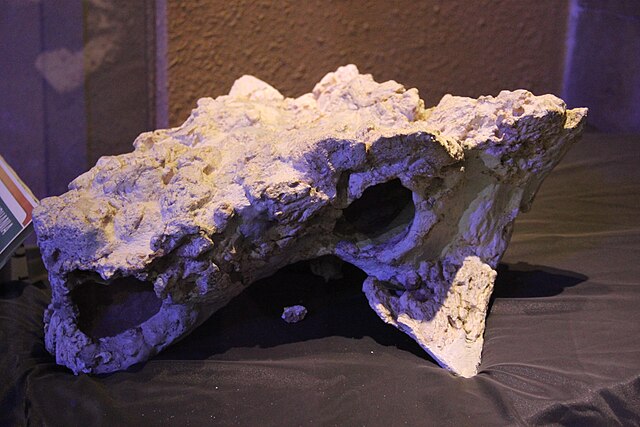
Scientists have made an exciting discovery on the Isle of Wight in England: the fossilized remains of a previously unknown species of dinosaur. This remarkable find represents the first new species of armored dinosaur to be unearthed on the island since 1865.
Belonging to the family of ankylosaurs, this dinosaur possesses a fearsome appearance due to its blade-like armor. However, despite its formidable exterior, the giant reptile, named Vectipelta barretti, was a herbivore.
Fossils of Vectipelta barretti
The fossils of Vectipelta barretti were found in rock formations that date back approximately 66 to 145 million years. The name “Vectipelta barretti” pays homage to Professor Paul Barrett, a distinguished researcher who has dedicated two decades to the Natural History Museum in London.
When asked about this honor, Professor Barrett expressed his gratitude, feeling flattered and absolutely delighted to be recognized in such a manner. He humorously assured everyone that any perceived physical resemblance between him and the dinosaur was purely coincidental.
This discovery adds to our understanding of the diverse dinosaur fauna that once inhabited the Isle of Wight and provides valuable insights into the evolution and paleoecology of ankylosaurs during the Mesozoic era.
Adaptations of the dinosaurs
Although the newly discovered dinosaur shares certain resemblances with the previously known ankylosaur species on the Isle of Wight, called Polacanthus foxii, scientists believe that the two species were not closely related. There are differences between them in their neck, back, and pelvic bones.
In addition to those variations, the recently found dinosaur would have possessed more pronounced spiked armor. These distinguishing features suggest that Vectipelta barretti had its own unique evolutionary path and adaptations compared to Polacanthus foxii.
By examining the distinct characteristics of these dinosaurs, scientists can gain further insights into the diversity and adaptations of ankylosaurs during prehistoric times.
Similarities to ankylosaurs from China
The species, Vectipelta barretti, exhibits closer similarities to ankylosaurs discovered in China, indicating the possibility of free movement between Asia and Europe during the Early Cretaceous period. This finding has significant implications for our understanding of the species diversity in England during that era.
Stuart Pond, a researcher associated with the Natural History Museum, emphasized that this discovery sheds light on the variety of species that once inhabited England during that time.
The presence of Vectipelta barretti challenges previous assumptions about other similar fossil remains, which have been attributed to Polacanthus foxii for more than a century.
Say hello to the newest #dinosaur! 👋
A new species of armoured dinosaur has been described from the Isle of Wight and named in honour of Museum scientist @NHMdinolab! 🦕
Watch to find out more about the spikey find this #FossilFriday 👇 pic.twitter.com/7jyDNizG7r
— Natural History Museum (@NHM_London) June 16, 2023
Consequently, the newfound dinosaur prompts a reevaluation and reanalysis of these fossils, allowing scientists to gain a more accurate understanding of the ancient fauna in the region. This revelation underscores the interconnectedness of prehistoric ecosystems and suggests that dinosaur species had the capacity for dispersal across vast geographical regions.
The study of such fossils and their comparative analysis provides invaluable insights into the migration, evolution, and distribution of dinosaurs during the Early Cretaceous period.
Wessex Formation
The team responsible for the discovery emphasized the significance of the Wessex Formation, the site where the new species was unearthed. They consider it a tremendously valuable resource for enhancing our understanding of the events leading to the extinction of dinosaurs.
The extinction of dinosaurs 66 million years ago remains a subject of debate among scientists, with two prominent theories vying for attention.
One theory suggests that a catastrophic asteroid impact played a pivotal role in the mass disappearance of dinosaurs. Another theory proposes that massive volcanic eruptions may have been a contributing factor.
By studying the fossils and geological records within the Wessex Formation, researchers hope to gain insights into the circumstances surrounding the dinosaur extinction event. This includes investigating the ecological changes, environmental conditions, and potential triggers that may have led to their demise.
The site offers a unique opportunity to uncover critical information about the final chapter of the dinosaurs’ reign on Earth and the broader processes that shaped life on our planet.
See all the latest news from Greece and the world at Greekreporter.com. Contact our newsroom to report an update or send your story, photos and videos. Follow GR on Google News and subscribe here to our daily email!



